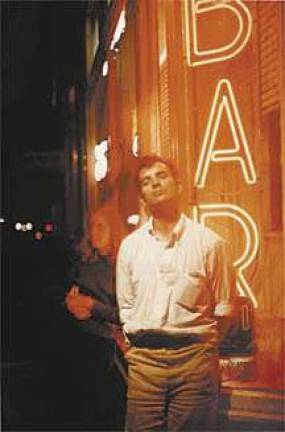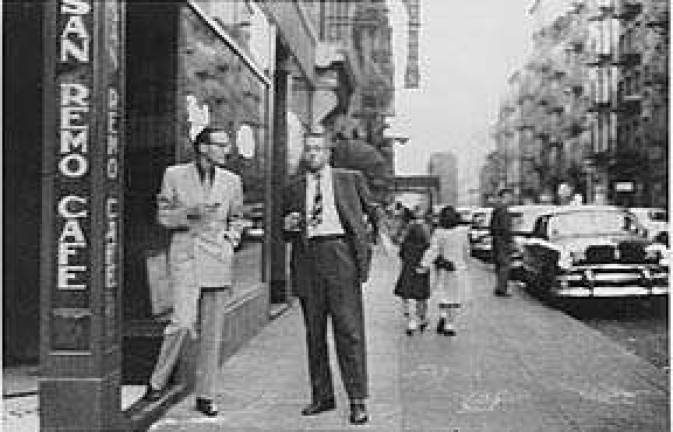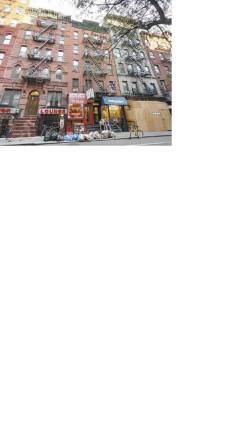Preserving the Beats in the Village



A landmark designation in the Village has preserved many iconic buildings of the50s and 60s
The Village's bragging rights as the ancestral home of the Beats and folk music in America is getting an official stamp of approval.
A recent decision by the NYC Landmarks Preservation Committee designates the South Village portion of Greenwich Village as a historical district in honor of the area's many memorable Beat-era locales.
"We're overjoyed that this district which we have fought ten years to have landmarked is now protected from demolition and overdevelopment," said Andrew Berman, executive director of the Greenwich Village Society for Historic Preservation.
"We are still fighting, however, to get the third and final segment of our proposed district, the area south of Houston Street, designated," Berman said.
The first phase designated the intersection of Jones Street and W. 4th Street to the cross of Seventh and Sixth avenues in 2008. The second preserved the area bordered by W. 4th Street onto Washington Square Park, Sixth Avenue, Houston Street, and Laguardia Place. The third is set to maintain the area continuing the intersection of Sixth Avenue and Houston Street to Watts and Thompson streets.
Here's a look at some of the places in and around the South Village that prompted artists such as Bob Dylan, Jimi Hendrix and Allen Ginsburg to make it their artistic home and subsequently contributed to its historical designation.
Café Reggio on 119 McDougal btwn W. 3rd Street and Minetta Lane. First opened in 1927 by Italian-immigrant Domenico Parisi who brought to America the first espresso machine and introduced Italian Cappuccino. It attracted artists and musicians such as Dylan especially during the bohemian-like revival of the South Village. Filming locale of Godfather II, Next Stop, Greenwich Village, The Kremlin Letter, Shaft (1971 film), Serpico, The Next Man, In Good Company. John F. Kennedy made a speech outside the shop in 1959.
Kettle of Fish, formerly at 114 MacDougal Street, now Café Esperanto. A popular venue for up and coming folk musicians such as Dylan and Phil Ochs. "Beatniks" such as Jack Keuroac mused their writings here. The blog Ephemeral New York excerpts "Door Wide Open: A Beat Love Affair in Letter," by girlfriend and author Joyce Johnson who recalls a 1958 night: "Shortly before he returned to Orlando to start packing, [Jack] went out one night with Gregory Corso to the Kettle of Fish, a bar on MacDougal Street that had a rough clientele and was frequented by moving men like Henri Cru. In the fall Jack and I had been photographed in front of its red neon sign by Jerry Yulsman."
Café Wha? on 115 MacDougal Street. Dylan played his premiere performance the night he arrived in the city. Allen Ginsburg frequented for cocktails. Jimi Hendrix is said to have been discovered here in 1966. Bruce Springsteen, Peter, Paul and Mary, Kool and the Gang, as well as comedians Richard Pryor and Bill Cosby have all performed here.
Minetta Tavern on 113 McDougal Street. A literary bastion which opened in 1937 and has been home to writers and poets such as Ernest Hemingway, Ezra Pound, E.E. Cummings and of course the Beatniks later.
The San Remo Café, corner of 93 MacDougal, now closed. Former site of the New York School of poets and painters, and The Living Theater. A famous hangout of Beat Generation writers such as William S. Burroughs, Gregory Corso, Ginsberg, Kerouac, and other bohemians like James Agee, W. H. Auden, James Baldwin, Miles Davis, Frank O'Hara, Jackson Pollock, William Styron, Dylan Thomas, Gore Vidal. Said to have been the site of a beginning sexual liaison between Kerouac and Vidal. It is the setting of Beat novels Go by John Clennon Holmes and The Subterraneans by Kerouac. Fred Neil's "Bleecker and MacDougal" album cover was taken in front of the San Remo Café on the northwest corner of that intersection.
Gaslight Café, 116 MacDougal Street, 1958- 1971. Originally a café where Beat poets like Ginsburg and Corso read their writings, in the 1960s it had become one of the premiere live folk music hubs. Dylan showcased "Masters Of War" here. It is called the Wreck Room today.